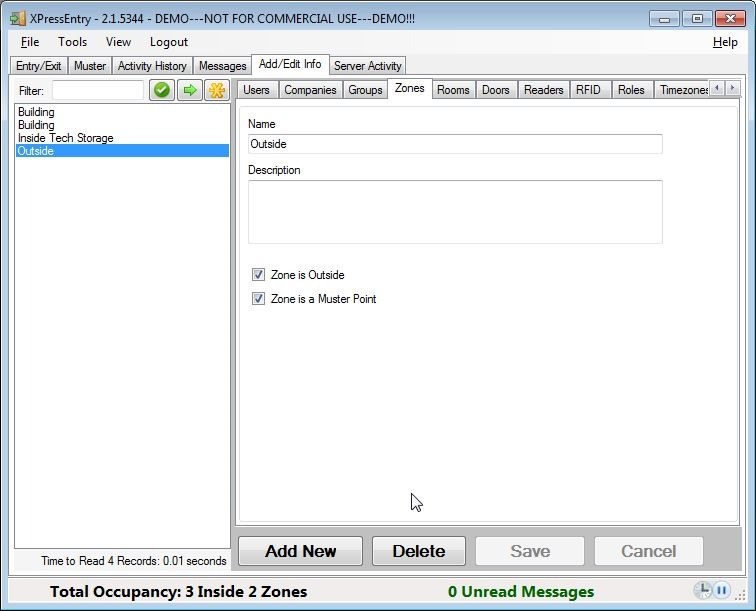XPressEntry – Identicard Documentation
1.Purpose
This document is intended to instruct the user on how to synchronize an XPressEntry mobile access control system with a Identicard Premisys access control system.
This integration allows you to add XPressEntry handheld readers to the Premisys system for the purposes of Entry/Exit and Mustering. Access Rights will be used from the Premisys system and mirrored in the XPressEntry system.
1.1.Assumptions
This document makes a few assumptions:
- The reader is familiar with XPressEntry systems and terminology. Basic setup and usage of XPressEntry can be found in the main XPressEntry manual.
- The Identicard Premisys installation is installed and functional. The user understands how to add Cards, Controllers, Readers and Access Groups to the Premisys system.
1.2.Installation
We will not cover installation of either XPressEntry or Premisys here. Refer to the appropriate manual for those installations.
2.Premisys Setup
2.1.Premisys Server Version
In order for the XPressEntry integration with Premisys to work properly, Premisys needs to be using at least version 2.16.3650
2.2.Is Premisys Running?
In order for XPressEntry to send events to Premisys, the Premisys Service has to be running. Under Services this is the “IDenticard Windows Service”
2.3.Telaeris XPressEntry Controller and Readers
On Version 2.16.3650+ of Premisys, you should be able to add a “Telaeris Controller” and at least two “Telaeris Readers” to Premisys. This should be done before continuing with the rest of the installation.
3.XPressEntry Data Manager Synchronizer Setup
XPressEntry gets data from Premisys through SQL Server. It pushes activities back into Premisys through an API running in the Premisys service. From the XPressEntry side, this is done by a module called Data Manager. This section will describe how to set up and get the Data Manager running for Premisys.
3.1.XPressEntry Enable Synchronization
From the main page of XPressEntry, go to XPressEntry / Settings (CTRL+S).
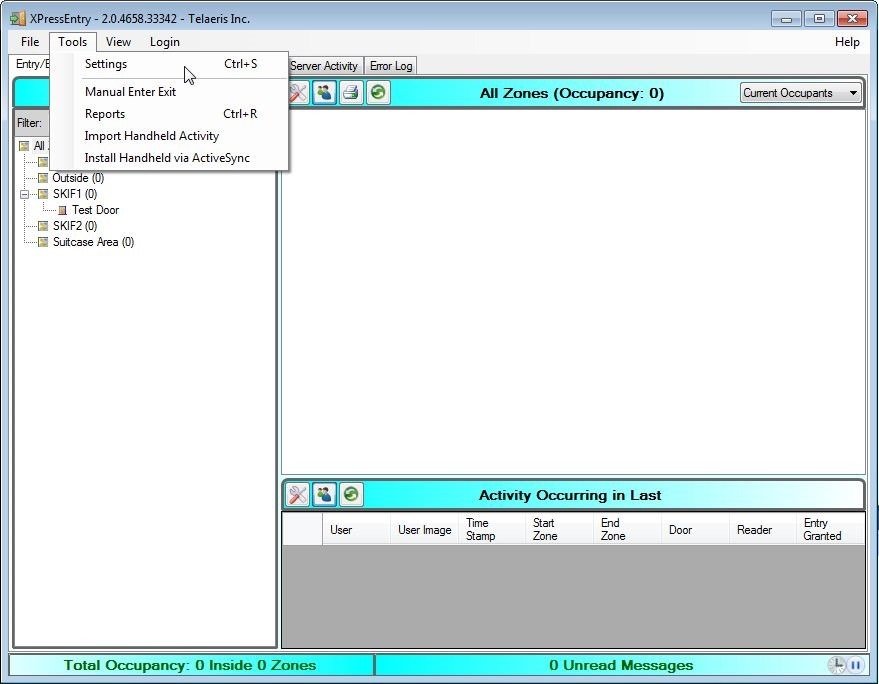
3.2.SQL Import / Export Tab
The first thing to do is install the Premisys SQL Import. This is done from the Menu bar on the Settings form. Click Import -> “Load Import Settings”. Select the file, installed by default to “C:\Program Files (x86)\Telaeris\XPressEntry\Imports\PremisysXPEImportSettings.sql”.
You can check that the imports were installed by loading the SQL Import / Export Tab and seeing if Cardholders, Premisys and Premisys Occupancies imports are installed.
You may have to modify the connection string for each import. In particular, you might have to change the Server section of the connection string:
Driver={SQL Server Native Client 10.0};Server=IDENTICARDVM\GCSSQLEXPRESS;
Database=Cardholders;Trusted_Connection=yes;
Change the bolded section to the SQL Server location for your installation. You can check that the connection can be established by pressing “Run Test Query”.
3.3.Data Manager Tab
From the Settings Page Select the Data Manager Tab.
From the ‘Type’ Combo Box, select “IDENTICARD”.
Check the “Enable Data Manager” checkbox.
Check the “Send XPressEntry Activities to Data Manager” checkbox.

Then Press the “Setup Data Manager” button.
There are three Imports to select here. Select each with the appropriate name. You also need to enter the Premisys Password for the Telaeris API in the Premisys system. Press Test Connect.
If Test Connect fails, the specific error message in the Status label should indicate where the test went wrong.
When filled out, the form should look similar to this:
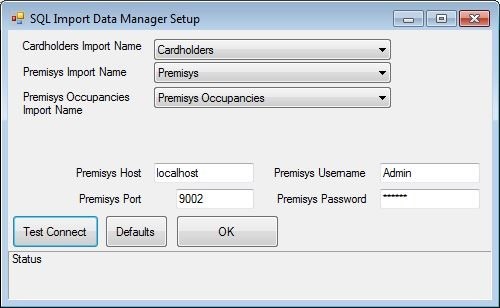
3.3.1.Update Frequencies
Set the Update Frequency to as often as you want the system to update. Note that only one update can run at a time and if this value is very low the system will constantly try to update (this is not always a problem).
Only the Activity and Full Sync Updates are available for the Premisys Data Manager. Set the Activity Update to a rather low frequency (I suggest 10 seconds). Set the Full Sync Update to a higher value (1-10 minutes).
3.3.2.Log Level
Select the Log Level desired. When setting up the system, SQL is the suggested Log Level. Once the system is up and functional as desired, CRITICAL should be the default Log Level.
IMPORTANT: You MUST press the “Save and apply settings” button for any data manager changes to take effect!
After you’ve saved, you can press the “Full Sync Now”button to synchronize XPressEntry with Premisys. Make sure you’ve set the synchronization update frequency on the main Data Manager tab.
When the Data Manager is set up and running, it should look something like this:
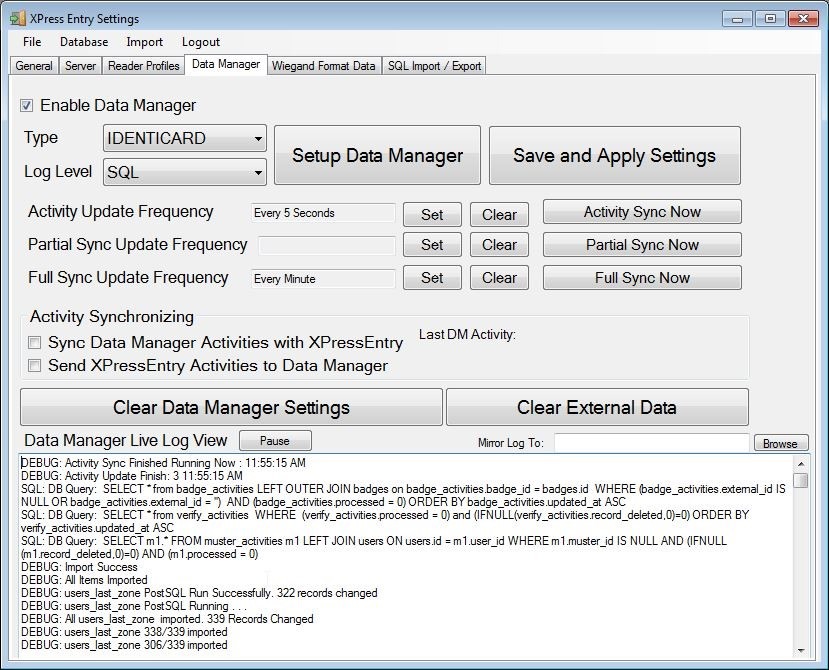
4.Setup XPressEntry Data
Once the Premisys System is set up and synchronizing, you will see the Card data represented in XPressEntry under the Add/Edit Info tab. Data which is imported from Premisys cannot be changed by default and is grayed out/read-only.
4.1.Allow Editing of External Data
If you want to be able to edit this data for whatever reason after it’s been synchronized, you can do that with the setting on the main settings tab:
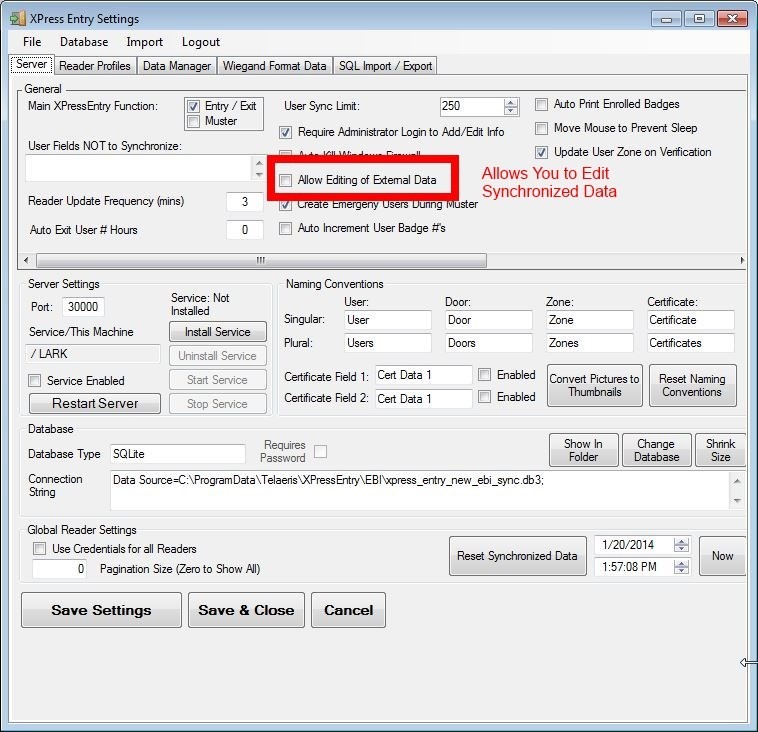
4.2.Readers
The list of Readers used for Premisys integration should be pulled during the synchronization. You can set up your readers to have one or many different configurations at a given time. This is done by selecting a Reader Profile for the reader.
There are two types of readers in XPressEntry, physical and logical readers.
4.2.1.Physical Readers
A physical reader in the XPressEntry system is a handheld or other device set up to communicate with the server. It is uniquely identified by the GUID field for the device.
Very often a physical reader will have a long/nonsensical name like: 570069006E00430045000000-00-008703124863. These readers are using the GUID as the default name for the device once they’ve synchronized.
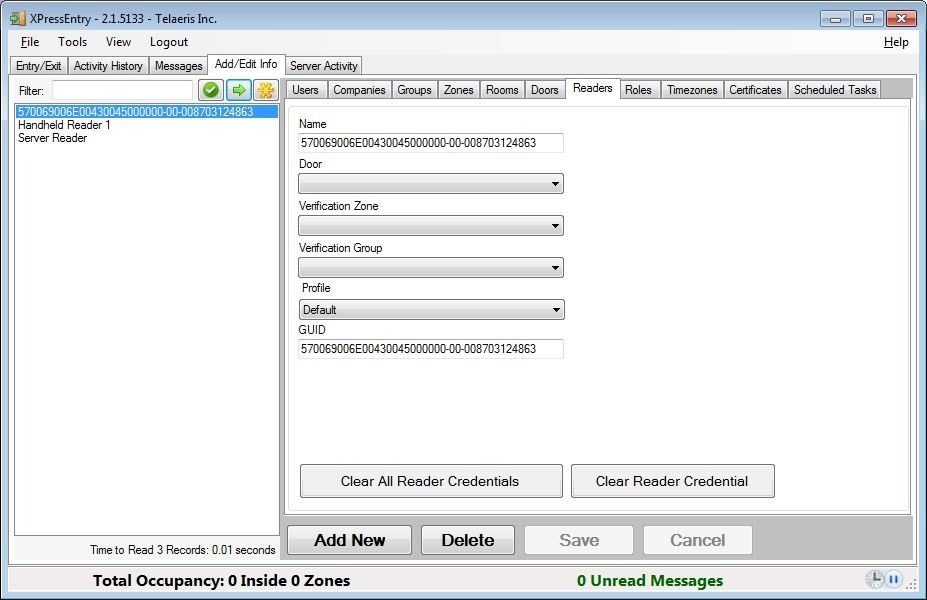
4.2.2.Logical Readers
Logical readers are readers in the system which are usually placeholders for physical readers. When setting up the system, these will be the readers synchronized by XPressEntry.
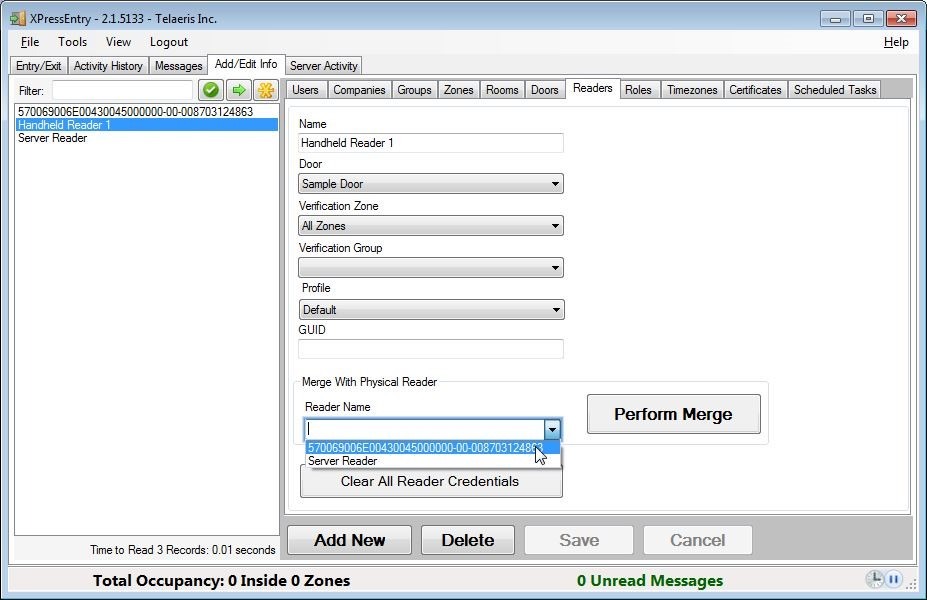
4.2.3.Merging Physical/Logical Readers
In order for Muster or Verification Activities to be sent to Premisys, we require the logical reader from Premisys to be merged with the physical reader from XPressEntry. All permission checks at this reader will be done using the Premisys permissions for that reader. It is suggested that you merge the “Entry” reader from each pair of Premisys readers with your physical reader.
If a handheld(physical) reader is only going to be used for Mustering or Verification, you can merge the logical and physical readers without any problems.
Note: This process is irreversible!
To merge the logical and physical readers do the following:
- Select the Logical Reader(from Premisys) from the Add/Edit Info Readers tab
- Under “Merge with Physical Reader”, select the physical reader as identified by its name (typically the GUID) from the drop-down list “Reader Name”. You might consider renaming these to identify which reader you are merging.
- Press “Perform Merge”.
Note: This process is irreversible!
If you don’t know the GUID of the exact reader you’re merging, the reader GUID is available on the handheld device on the Setup page under the “More” tab.
4.3.Reader Profiles
All readers in the XPressEntry system need a reader profile set up for them. These can be shared across readers with identical responsibilities. See the main XPressEntry manual for more information. For Premisys installations, there are two main things we want to ensure.
- Under General, make sure just the “Readers” Validation methods checkbox is checked.
- Check all of the User Modes you want to enable. We suggest a setup like the one below:
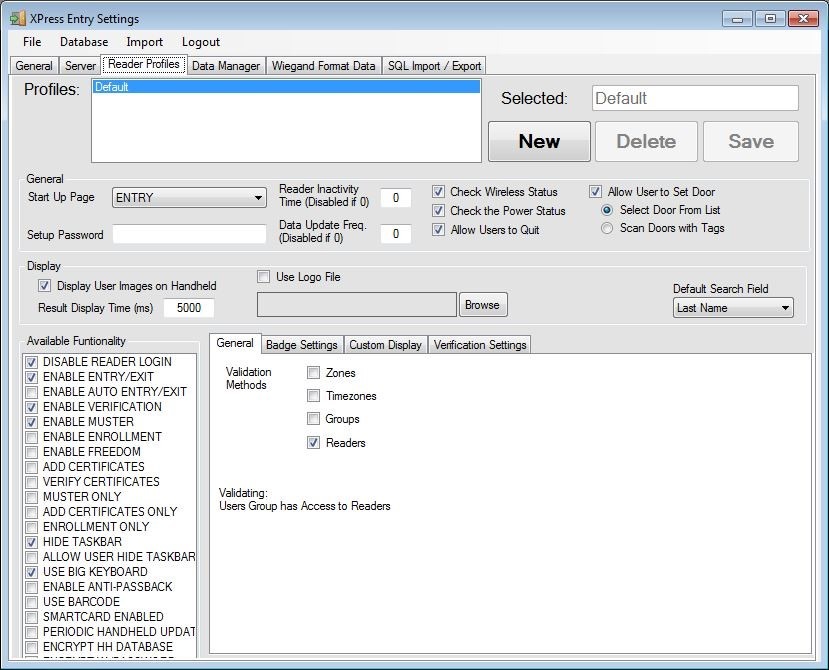
4.4.Doors
Doors are portals from one zone to a zone. They are a logical way to move from one zone to another. They are primarily used by XPressEntry for handhelds in Entry/Exit mode.
Users “Entering” a door are going from the Start Zone -> End Zone. Users “Exiting” a door are going from the End Zone -> Start Zone
Premisys Readers are created in Pairs. You should ensure that you create a Door for each pair of Entry/Exit readers we have imported from Premisys. These should look similar to the following:
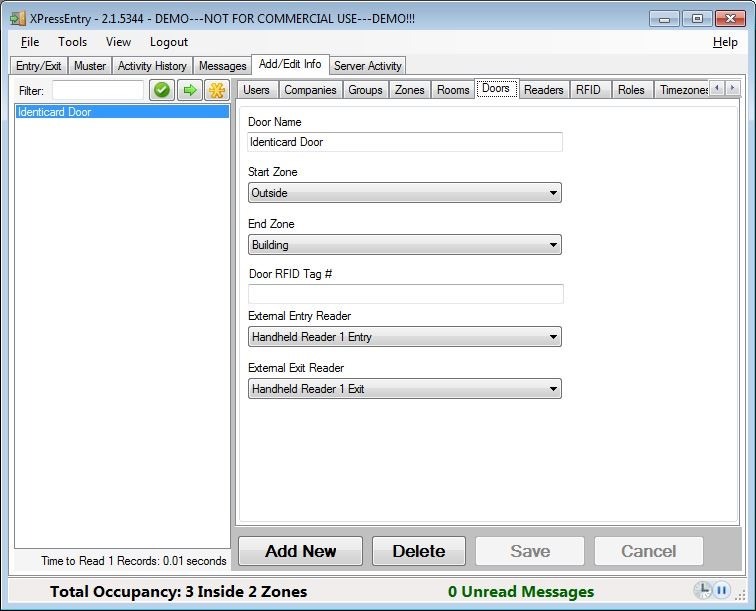
Note that the “External Entry/Exit Reader” are set to the paired readers from the Premisys system.
4.5.Zones
XPressEntry has two types of zones. “Outside” zones are used for mustering and representing the area outside of the location XPressEntry is tracking. All other zones are considered part of the system. Occupancies are only tracked for users who are in non-outside zones.
There are two default zones in XPressEntry, Building and Outside. These can safely be deleted if you want to just use the Access Areas from Premisys. If you do this, make sure you have a Premisys area to represent “Outside” as this is the area used to muster users.
